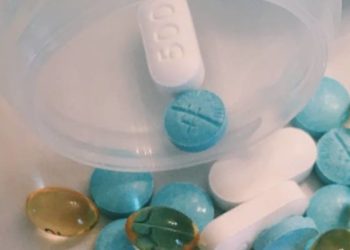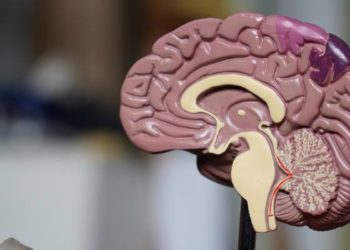2 Minute Medicine Rewind October 7, 2024
1. Predicting dementia in primary care settings for a 60-79 year old cohort should include age, history of stroke or epilepsy, gait problems, anticholinergic burden, use of SSRIs, receipt of social services, third-party involvement in consultations and a high number of missed primary care appointments.
2. Predicting dementia in primary care settings for a 60-79 year old cohort should include the same factors as in the younger cohort though associations with incident dementia was generally weaker
Evidence Rating Level: 2 (Good)
Aging populations are driving a rise in dementia cases globally with nearly 40% of cases going undiagnosed. General practitioners play a crucial role in the early identification and management of dementia. Existing models to predict dementia risk, such as the Dementia Risk Score, struggle with predictive accuracy, particularly in older populations, and often lack comprehensive data from external diagnostic sources. This study aimed to develop a new risk prediction model for primary care practitioners. Electronic health records from 383 general practices were extracted. 2 separate dementia risk models were developed based on age: 60–79 (development cohort n = 616,366; validation cohort n = 419,126) and 80–89 (n = 175,131 and n = 118,717). The study looked for the incidence of dementia within 5 years and looked to find risk factors for dementia. For the cohort aged 60-79 years, there were 10841 incidences of dementia diagnoses over the 616,366 individuals including 24% were incident cases of Alzheimer’s disease, 18% vascular dementia, and 58% mixed, unspecified or other causes. Age and female sex were associated with incident dementia. After controlling for these variables, other factors associated with dementia were a history of stroke/TIA, epilepsy, gait problems, use of antidepressants and mood stabilizers, anticholinergic burden, and other factors. BMI also demonstrated a strong negative association. In the 80-89 years cohort, there were 15,994 incident cases of dementia from 175,131 individuals including 18% were incident cases of Alzheimer’s disease, 15% vascular dementia, and 67% mixed, unspecified or other causes. Associations with individual factors were weak in this cohort but still included similar associations such as stroke, use of non-tricyclic antidepressants, receipt of social care, and BMI. After validation and calibration, the younger cohort had a good Harrell’s C-statistic of 0.78 and good calibration in the validation cohort. The older cohort had a moderate C-statistic but could successfully identify patients who would go on to get dementia 2 times as effectively.
1. S100β levels 24 hours after IVT were independently associated with HT, infarct volume, and prognosis in stroke patients
Evidence Rating Level: 2 (Good)
Intravenous thrombolysis (IVT) is the treatment with the highest level of evidence in acute disabling ischemic stroke however half of these patients do not reach favourable outcomes. S100β is a calcium-binding protein mostly seen in astrocytes meaning an elevation in serum concentrations reflets astrocyte damage. Previous studies have shown that S100β levels in the peripheral blood 48 hours post-stroke was functionally significant at 3 months. Thrombolytic drugs may play a role in elevating S100β as they increase the breakdown of the blood-brain barrier which allows more S100β to enter systemic circulation. This prospective cohort study aimed to look at S100β levels in patients 24 hours after IVT and look for the relationship between S100β and hemorrhagic transformation (HT) and final infarct volume. 1072 blood samples were analyzed. Patients who underwent HT had significantly higher serum S100β levels 24 hours post-IVT (0.237 (0.100–0.801) ng/mL vs. 0.118 (0.050–0.240) ng/mL, P < 0.001). No significant interaction association was found between stroke lateralization and S100β. When looking at infarct volume, the highest S100β levels were independently corelated with larger infarct volumes. The association of infarct volume and S100β levels were similar between dominant and non-dominant hemisphere stroke showing no increased incidence in either outcome. Functionally, higher S100β was associated with higher 24-h and 7-day National Institutes of Health Stroke Scale (NIHSS) scores. Patients with dominant hemisphere strokes and high S100β had higher NIHSS scores. S100β was also significantly elevated in patients with unfavourable outcomes on the modified Rankin Scale (mRS) score (0.140 (0.062–0.393) ng/mL vs. 0.100 (0.050–0.196) ng/mL, P < 0.001). Finally, the highest S100β level was independently predictive of all-cause death within 3 months of IVT. Therefore, S100β levels 24 hours after IVT were independently associated with HT, infarct volume, and prognosis in stroke patients.
1. DaxibotulinumtoxinA-lanm 500U showed the greatest reduction in MAS scores in patients suffering from spasticity following stroke and traumatic brain injury
Evidence Rating Level: 1 (Excellent)
Spasticity is a common outcome of upper motor neuron damage that can happen in stroke, traumatic brain injury, spinal cord injury, and neurodegenerative diseases. It is caused by a hyperexcitability that results in muscle stretch hyperreflexia, velocity-dependent hypertonia, and spastic dystonia. This results in long-term motor function impairment and a reduction in quality of life, activities of daily living, and can increase caregiver burden. The current first-line pharmacotherapy for adults with upper limb spasticity (ULS) is intramuscular botulinum toxin type A injections. This treatment has an effectiveness of 12-13 weeks requiring patients to receive around four injections per year. DaxibotulinumtoxinA-lanm for injection (DAXI) is a new-generation neurotoxin that has been shown to have an extended duration of effect. This double-blind, placebo-controlled, dose-ranging study was used to evaluate three doses of DAXI for adults with ULS post-stroke or TBI. Participants received either a placebo, DAXI 250 U, DAXI 375 U, or DAXI 500 U. Participants, investigators, other clinical staff, and the study sponsor were blinded to treatment assignment. Participants were evaluated at least five times (Weeks 2, 4, 6, 8, and 12) to assess treatment response, tolerability, and safety. Muscle tone was measured using the Modified Ashworth Scale (MAS) in the suprahypertonic muscle (SMG) and the Patient Global Impression of Change (PGIC). All treatment groups showed an improvement from baseline and compared to the placebo at week 6 with DAXI 500U showing the largest reduction. At week 12, the reduction in MAS score from baseline at the primary target SMG was 25.0% (6/24) for placebo, and 40.9% (9/22; p = .25), 36.8% (7/19; p = .43), and 50.0% (9/18; p = .11) for DAXI 250 U, DAXI 375 U, and DAXI 500 U versus placebo, respectively. Mean PGIC scores also significantly improved in all groups from baseline, but no difference was seen between placebo and DAXI dose groups. All DAXI doses were well tolerated. Therefore, DAXI 500U showed the greatest therapeutic effect while maintaining high levels of safety and no adverse effects.
1. Double-dose ESWT to the gastrocnemius and soleus showed greater improvements in post-stroke ankle plantar flexor spasticity
Evidence Rating Level: 1 (Excellent)
Spasticity is a frequent complication following a stroke, resulting from upper motor neuron syndrome. It presents as an increase in muscle tone that depends on movement speed, caused by heightened excitability of muscle spindles. Extracorporeal shockwave therapy (ESWT) has recently emerged as a treatment modality for post-stroke spasticity (PSS). ESWT s a series of high-energy mechanical waves that promote neovascularization, enhances blood circulation, facilitates cellular self-repair, and can be analgesic by disrupting pain signal transmission. This double-blinded, randomized controlled trial focused on ESWT in post-stroke ankle plantar flexor spasticity to characterize the duration of its effect. Participants were either given double-dose shockwave or a control shockwave protocol. The double-dose ESWT group received 2000 shots for each muscle (gastrocnemius and soleus; 4000 total). The control ESWT group received focused ESWT only to the gastrocnemius muscle (2000 total). Participants were followed for 24 weeks and assessed using the modified Ashworth Scale (MAS) Tardieu Scale (MTS), passive range of motion (PROM) of the ankle, Timed Up and Go (TUG) Test, Barthel index and strain elastography. Double ESWT therapy showed a significant improvement from baseline over 24 weeks (p = 0.043) whereas single ESWT showed no significant improvement (p = 0.128). Similarly, PROM improvement from baseline to 24 weeks was seen in the double ESWT group (p = 0.007) but not in single ESWT (p = 0.181). TUG showed the same trend with double ESWT showing improvements over 24 weeks (p < 0.001) but not single ESWT (p = 0.114). Both groups however showed improvements in the Barthel index. Comparing between groups at different time periods, the TUG test (p = 0.011), Barthel index (p = 0.036), and strain elastography (p = 0.008) showed significant interactions indicating changes in these outcomes over time were different between the groups. Therefore, double-dose ESWT on post-stroke ankle plantar flexor spasticity showed significant improvements compared to the control.
1. Just-in-time adherence support systems in gamified cognitive training should be applied when participants are failing to reach key performance indicators such as highest level achieved, total game sessions played, and overall gameplay proportion.
Evidence Rating Level: 2 (Good)
Mild cognitive impairment (MCI), Alzheimer’s disease (AD), and related dementias are three of the most common chronic illnesses that lead to memory loss and deterioration of cognitive skills. To support populations affected by these conditions, the current therapy focuses on pharmacological therapy and non-pharmacological interventions such as gamified cognitive training, which has been shown to increase adherence, motivation, and effectiveness. This paper aimed to identify predictors of adherence to gamified cognitive training which is essential for a just-in-time adherence support system. Machine learning algorithms were developed for each game that was tested. Surveys gathering participants’ baseline information was gathered including technical proficiency, self-efficacy, subjective cognition, perceived benefits, objective reasoning, objective processing speed, objective memory instant recall, and objective memory delayed recall. The study found that the best predictors of adherence were not demographics or baseline characteristics but rather game performance measures. Some of the indicators of performance they identified were highest level achieved, total game sessions played, and overall gameplay proportion. Interestingly, there was no association between the participant’s initial performance in the game and adherence. The number of sessions played however does predict adherence. Therefore, the ideal gamified cognitive training methods create a balanced of enticing participants to engage in many sessions quickly near the beginning of the training to promote adherence and then sustain long-term adherence with a balanced difficulty allowing constant improvement.
Image: PD
©2024 2 Minute Medicine, Inc. All rights reserved. No works may be reproduced without expressed written consent from 2 Minute Medicine, Inc. Inquire about licensing here. No article should be construed as medical advice and is not intended as such by the authors or by 2 Minute Medicine, Inc.







